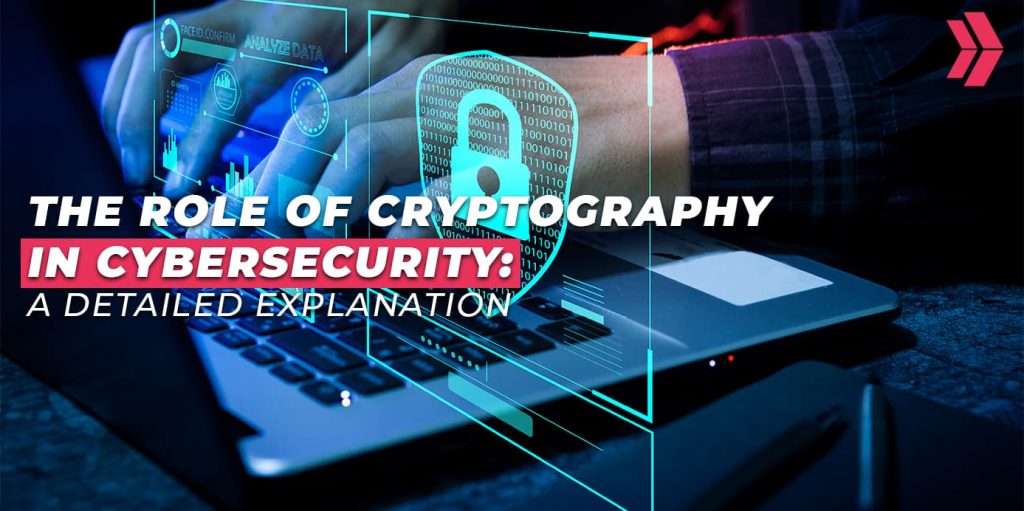Cryptography is a fundamental security technique for encrypting data. It safeguards information by transforming it into unreadable code.
Cryptography plays a crucial role in cyber security, serving as the first line of defense in protecting information online. By converting sensitive data into coded messages, cryptography ensures that only those with the decryption key can access the original content, thus maintaining confidentiality.
This is vital not only for securing personal data but also for safeguarding national security, corporate secrets, and ensuring the integrity and authenticity of digital communications. Its use spans various applications including secure communication, authentication protocols, and digital signatures, making it an indispensable tool for thwarting cyber threats and maintaining trust in the digital ecosystem. Encrypting data helps to prevent unauthorized access, which is essential in a world where cyber attacks are increasingly sophisticated and frequent.
The Essence Of Cryptography In Cyber Security
The protection of digital data is crucial. Cybercriminals are always trying to steal information. Cryptography helps by scrambling data. Only people with a secret key can read it. This process is called encryption. Encryption keeps our private conversations safe and secure.
Internet shopping and online banking use cryptography. It protects credit card and account details. Governments and military also rely on it. They keep national secrets safe using cryptography. Without cryptography, personal and national security could be at risk. Thus, it is vital for cyber defense.
Imagine sending a love letter that everyone can read. With cryptography, your letter is locked in a code. Only your love can unlock it. That’s how private information stays private on the internet.

Historical Journey Of Cryptographic Methods
Cryptography is a technique to protect information. It uses codes and ciphers. People have kept secrets with cryptography for thousands of years. Ancient Egyptians used hieroglyphs to hide their messages. This was the start of encrypted communication.
In the Roman Empire, Julius Caesar created the Caesar cipher. It shifted letters in the alphabet. This made messages hard to read for others. Throughout history, various methods have evolved.
The 20th century brought machines like the Enigma. It was famous in World War II. Alan Turing helped decrypt Enigma messages. Now, we use digital encryption. This is thanks to advances in math and computers.
| Period | Type of Encryption |
|---|---|
| Ancient Times | Hieroglyphs |
| Roman Era | Caesar Cipher |
| World War II | Enigma Machine |
| Modern Days | Digital Encryption |
Key Principles Behind Cryptographic Systems
Encryption transforms readable data into unreadable code. This process ensures that information stays private. It uses special secret keys and algorithms.
Decryption does the opposite. It turns the code back into readable data. Only trusted parties with the right key can decode it.
Let’s talk about algorithms and keys. They are the heart of cryptography. A strong algorithm makes data secure. The key is like a password. Without the right key, data stays safe.
Types Of Cryptography Used Today
Cryptography guards our online secrets. It uses complex math to secure data. Two main types are key in today’s cyber defenses. Let’s explore each type.
First, Symmetric encryption uses the same key to lock and unlock data. This shared secret keeps things simple. Yet, secure key sharing is tough.
On the other hand, Asymmetric encryption has two keys. One key is public; the other is private. It is safer, because only one key is secret.
Hash functions turn data into a short hash. No two data pieces should create the same hash. This checks if data stayed the same during sending.
They’re vital in things like password storage and digital signatures. We use them without realizing, in apps and browsing the web.
Cryptography In Everyday Technology
Cryptography keeps our online chats and emails safe. To stop bad guys, websites use encryption. It scrambles the info so only intended people can read it. Secure connections, like HTTPS, protect the data you send on the internet.
Think about when you shop online or check your bank account. Encryption defends your credit card and personal info. Banks and online stores have tight security. They use special codes that are hard to break. This means your money and details stay safe from hackers.
| Area | Use of Cryptography |
|---|---|
| Banking | Protects accounts and transactions |
| eCommerce | Secures online shopping |
- SSL certificates make websites trustworthy.
- Payment gateways use strong encryption for money safety.
- Authentication processes keep your accounts secure.

Challenges And Limitations Of Cryptography
Cryptography is vital to protect data in the cyber world. Yet, it faces daunting challenges. Advanced cyber threats such as quantum computing can break traditional encryption methods. The landscape of threats is also ever-changing, making it hard to stay ahead.
Key management poses another significant hurdle. Securing the creation, distribution, and storage of keys is a complex task. Without proper practices, keys can become vulnerable to theft or loss. This could render encryption efforts useless. Organizations must implement strict protocols to safeguard these critical assets.
Future Of Cryptography In Cyber Security
The future of cryptography is closely tied to the advancements in quantum computing. Experts are working hard on creating new protocols. These protocols will keep our data safe against quantum threats. We must build quantum-resistant algorithms to protect information.
One exciting field is innovations in key exchange protocols. They focus on how devices share secret keys safely. Such innovations aim to ensure that our conversations and transactions remain confidential and secure. The development of these protocols is essential for maintaining trust in online communications.
| Quantum Computing | Innovations in Key Exchange |
|---|---|
| Building quantum-resistant cryptography | Improving how keys are exchanged securely |
| Creating new, secure algorithms | Ensuring our private chats stay private |
Learning And Implementing Cryptographic Techniques
Cryptography is a key part of cyber security. It keeps our online information safe. To learn about it, many resources exist. Aspiring professionals can explore online courses, workshops, and books. They focus on encryption, algorithm design, and security protocols.
Secure application development requires best practices. These include using strong algorithms and testing code. Developers must update security measures regularly. Code reviews by peers help find weaknesses. Using open-source tools can also assist in finding vulnerabilities.
| Practice | Description |
|---|---|
| Algorithm use | Choose strong, well-known algorithms. |
| Code testing | Perform thorough tests to find bugs. |
| Regular updates | Keep all security measures up to date. |
| Code reviews | Let peers examine code for issues. |
| Open-source tools | Use them to help spot security gaps. |

Frequently Asked Questions On What Is Cryptography In Cyber Security
What Is Cryptology In Cyber Security?
Cryptology in cybersecurity refers to the study of codes, enabling secure communication by encompassing both cryptography (code creation) and cryptanalysis (code breaking). It plays a crucial role in protecting data.
What Are The Three Types Of Cryptography?
The three types of cryptography are symmetric-key cryptography, asymmetric-key cryptography (also known as public-key cryptography), and hash functions.
Is Cryptography The Same As Encryption?
Cryptography encompasses more than encryption; it includes various techniques for secure communication. Encryption is specifically the process of converting information into a secret code to hide its content.
What Is Encryption In Cyber Security?
Encryption in cyber security is the process of converting data into a coded form to prevent unauthorized access, ensuring information confidentiality and security.
Conclusion
Understanding cryptography proves essential to fortifying digital fortresses in our cyber-centric society. It serves as both the sword and shield against escalating threats within the digital realm. From safeguarding personal data to maintaining national security, the role of cryptography is ever-evolving.
Embrace its principles, and you’ll enhance your cyber defenses—ensuring a safer future in our interconnected world.

